 |
| Colonial body Philippine Assembly, imperialist US Occupation |
Photo credit: http://philippineamericanwar.webs.com/
 |
| Colonial body Philippine Assembly, imperialist US Occupation |
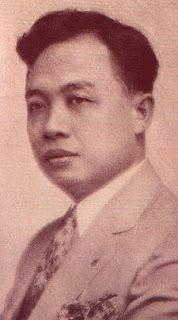 |
| Filipino Nationalist Claro M. Recto |
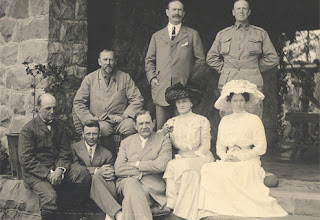 |
| Imperialist Civil Gov.-Gen William Forbes (right, back row) |
 |
| Japanese occupies the US colony, the Philippines |
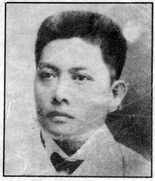 |
| Gen. Santiago Alvarez |
 |
| Filipinos captured by American invaders |
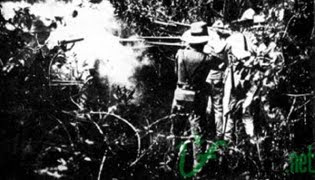 |
| Filipino soldiers resisting imperialist United States invasion |
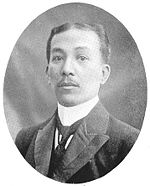 |
| Felipe Agoncillo |
 |
| William Rufus Day |
 |
| Bust of Gen. Simon de Anda on the wall of Santa Cruz Church |
 |
| Spanish military map of the Philippines |
 |
| Early Chinese Rice Trader in the Philippines |
 |
| Gov.-Gen. Claveria |
 |
| Rey Felipe II de Espana (King Philip II of Spain) |
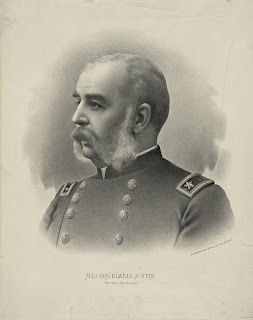 |
| U.S. Maj. Gen. Elwell Otis "fighting, having begun, must go on to the grim end" |
 |
| Gen. Miguel C. Malvar |
 1869 - Pio Valenzuela, future co-founder and auditor of the revolutionary body Kataastaasang, Kagalanggalangang Katipunan nang manga Anak nang Bayan (KKK), is born during the Spanish colonial period; Valenzuela, will also be Gat Andres Bonifacio's emissary to Jose Rizal just before the outbreak of the Revolution; he will turn his back on his compatriots and the revolution, surrending himself to the Spaniards after the KKK was discovered and during the United States' invasion of the Philippines, will accept American's offer of serving as municipal president of Polo, Bulacan.
1869 - Pio Valenzuela, future co-founder and auditor of the revolutionary body Kataastaasang, Kagalanggalangang Katipunan nang manga Anak nang Bayan (KKK), is born during the Spanish colonial period; Valenzuela, will also be Gat Andres Bonifacio's emissary to Jose Rizal just before the outbreak of the Revolution; he will turn his back on his compatriots and the revolution, surrending himself to the Spaniards after the KKK was discovered and during the United States' invasion of the Philippines, will accept American's offer of serving as municipal president of Polo, Bulacan.
 |
| World War II Blackout Bulbs |
 |
| US Forces, on a sinister plan to invade the Philippines, disembark |
 |
| Invading American soldiers march to Manila Photo credit: Filipiniana.net |
 1896 - Several weeks before the breakout of the Philippine Revolution, the Spanish colonial authorities sense activities relating to the secret revolutionary organization, the Kataastaasang, Kagalanggalangang Katipunan nang manga Anak nang Bayan (KKK) , with Lieutenant Manuel Sityar of the Guardia Civil stationed in Pasig sending a confidential letter to the Civil Governor of Manila informing him of how certain individuals, especially in Mandaluyong and San Juan del Monte, are enlisting men for unknown purposes, making them sign in pledge with their own blood; the Katipunan was an anticolonial secret society established by Andres Bonifacio, Ladislao Diwa, Teodoro Plata, Deodato Arellano and Valentin Diaz on 7 July 1892, with political, moral and civic aims and a clear concept of one nation they referred to as TAGALOG [referring] to all born in the Philippines from what ever ethnic group.
1896 - Several weeks before the breakout of the Philippine Revolution, the Spanish colonial authorities sense activities relating to the secret revolutionary organization, the Kataastaasang, Kagalanggalangang Katipunan nang manga Anak nang Bayan (KKK) , with Lieutenant Manuel Sityar of the Guardia Civil stationed in Pasig sending a confidential letter to the Civil Governor of Manila informing him of how certain individuals, especially in Mandaluyong and San Juan del Monte, are enlisting men for unknown purposes, making them sign in pledge with their own blood; the Katipunan was an anticolonial secret society established by Andres Bonifacio, Ladislao Diwa, Teodoro Plata, Deodato Arellano and Valentin Diaz on 7 July 1892, with political, moral and civic aims and a clear concept of one nation they referred to as TAGALOG [referring] to all born in the Philippines from what ever ethnic group.
 |
| Imperialist US Gen. Anderson |
 |
| Un Peso Banknote |
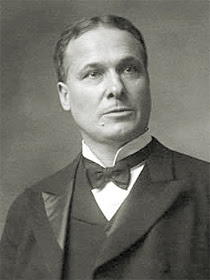 |
| Jacob G. Schurman 1st Civilian Imperialist US Representative |
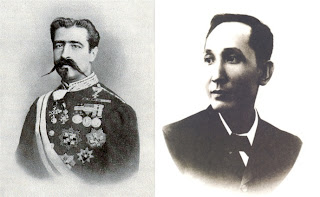 |
| Gov-Gen Agustin - Gat Apolinario Mabini |